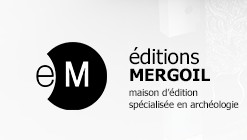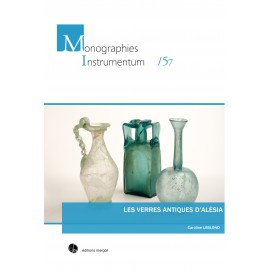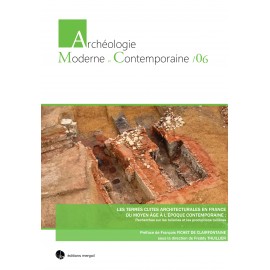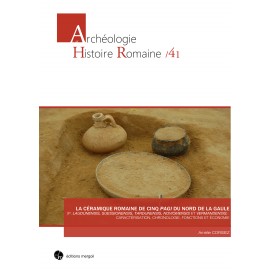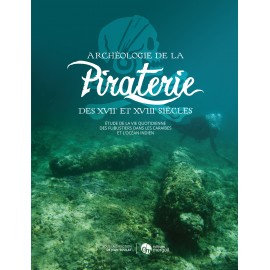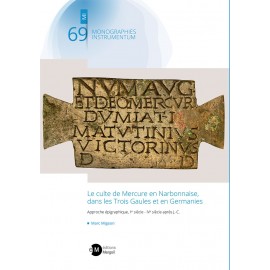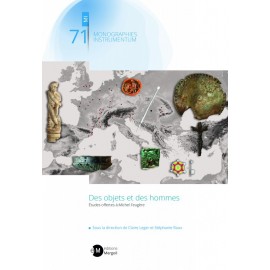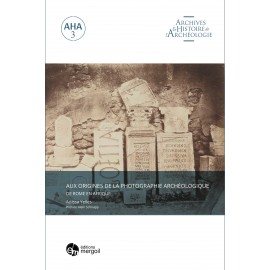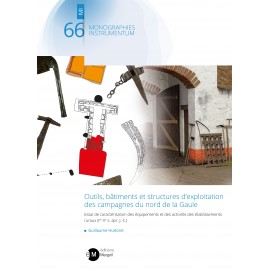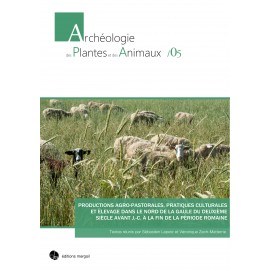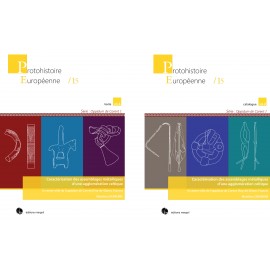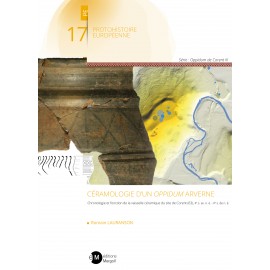No products
Prices are tax included
Product successfully added to your shopping cart
There are 0 items in your cart. There is 1 item in your cart.
Série : Oppidum de Corent
- Archéologie et Histoire Romaine
- Archéologie Moderne et Contemporaine
- Archéologie des Plantes et des Animaux
- Archéologie du Paysage
- Archives & Histoire de l'Archéologie
- Europe Médiévale
- Monographies Instrumentum
- Préhistoires
- Protohistoire européenne
- Research Protocols
- Off collections
- Les cahiers de saint-michel de Cuxa
- Second-hand
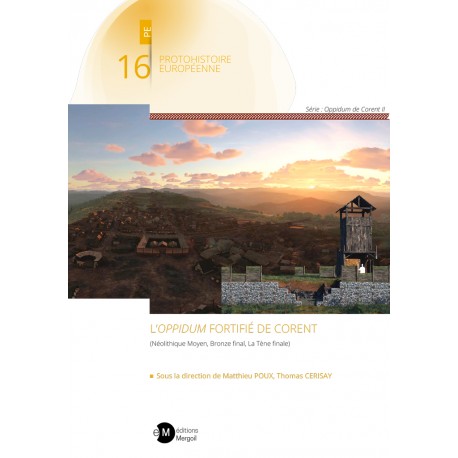 View larger
View larger L’oppidum fortifié de Corent
PE-16
New
PE-16. - L’oppidum fortifié de Corent. (Néolithique Moyen, Bronze final, La Tène finale)
Matthieu POUX, Thomas CERISAY (eds.)
Préf1. S. Krausz, Préf2. Ian B. Ralston,
2023, 480 p. coul. (ISBN : 978-2-35518-138-2).
Série : Oppidum de Corent II
Produced and published with the support of the Département du Puy-de-Dôme.
distribution : Editions Mergoil.
language: french
More info
The volcanic plateau at Corent, located some 15 km from Clermont-Ferrand (Puy-de-Dôme, Auvergne, France), has become well-known since the early 2000s for the importance of its Neolithic to Iron Age occupation evidence; this has already given rise to several publications. This volume focuses more specifically on the three fortification systems recently discovered as part of a large-scale examination of the site undertaken between 2018 and 2021. Taking evidence obtained during earlier excavations into consideration, these structures can be directly linked to major settlements identified on the plateau and dating to the Middle Neolithic (3rd millennium BC), Late Bronze Age (10th-9th centuries BC) and Late la Tѐne period (2nd-1st centuries BC). Architectural analysis of the structural remains and study of their associated material culture, informed by comparisons at a regional and European
scale, provide an insight into the evolution of the defensive systems adopted for this site at different periods. Setting this evidence into context permits an overview of the successive occupation evidence identified from the Neolithic until the end of the Roman period. Contrasting the evidence recovered from the oppidum of Corent with that from other fortified settlements near Clermont-Ferrand also provides the opportunity to examine the links between late Iron Age Corent and the neighbouring sites of Gondole and Gergovia. The problem of identifying the capital of the Arverni in the 1st century B.C. and its involvement in the events described by Caesar at the end of the Gallic War leads to a fresh assessment, underpinned by the results of recent excavations, which melds both archaeological and historical data. Widening the framework, it also leads to a new consideration of late Iron Age urbanism, here envisaged as being far from confined within the ramparts of the oppida, but rather dependent on geography as well as on the enduring memory of landscape inhabitation across the longue durée.
With the collaboration and contributions of : Lucie d’Aguanno, Ambrine Bouchène, William Buttler, Nicolas Cayré, Candice Chany, Florian Couderc, Bertrand Dousteyssier, Nicolas Dubreu, Hélène Duchamp, Thomas Eydaleine, Julien Guillemoteau, Eloïse Guyon, Katherine Gruel, Romain Lauranson, Anaïs Lecêtre, Sylvain Mader, Antoine Meiraud, Pierre-Yves Milcent, Audrey Pranyies, Rémy Ranouil, David Romeuf, Louis-Marie Sanial Aujard Catot, François-Xavier Simon, Alyssa Turgis, Manon Vallée, Franck Vautier.
summary :
PRÉFACES
CHAPITRE I. INTRODUCTION
CHAPITRE II. CONTEXTE
CHAPITRE III. LES FORTIFICATIONS DE CORENT : ENJEUX ET PROBLÉMATIQUE
CHAPITRE IV. LES OPÉRATIONS DE FOUILLE (2017-2021)
CHAPITRE V. L’ENCEINTE DU NÉOLITHIQUE MOYEN
CHAPITRE VI. LE REMPART DU BRONZE FINAL
CHAPITRE VII. LES REMPARTS DE LA TÈNE FINALE
CHAPITRE VIII. CONCLUSION GÉNÉRALE
POSTFACE
BIBLIOGRAPHIE
ANNEXE
